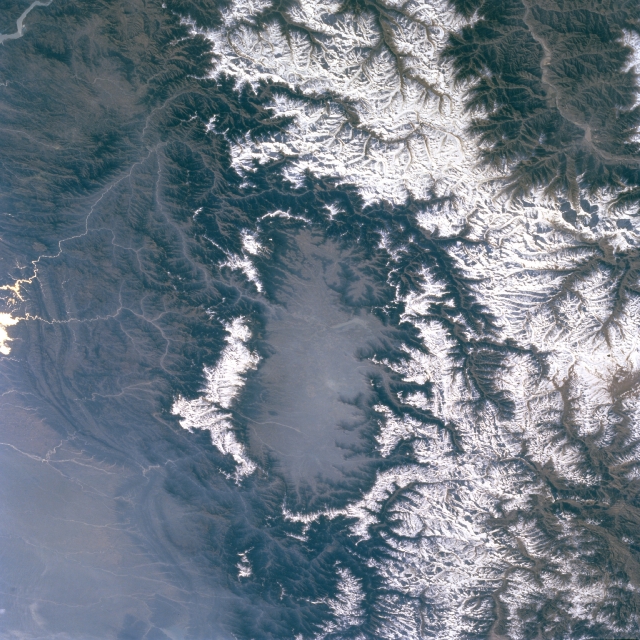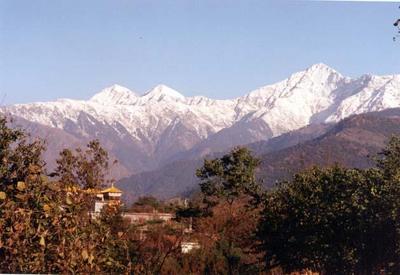|
Khas People
Khas people (; ne, खस) popularly known as Khas Arya are an Indo-Aryan peoples, Indo-Aryan ethno-linguistic group native to the Himalayas, Himalayan region of South Asia, what is now present-day Nepal, Indian states of Uttarakhand, West Bengal and Sikkim. Historically, Khas were the speakers of an ancient ''Khas language'' from the Indo-Aryan language family and the earliest recorded speakers of the Western Pahari languages. The large portion of the Indo-Aryan speakers throughout lower Himalayas were the Khas people. An Indo-Aryan migrations, intrusion of this tribe from the Western Himalayas, Western and Northwestern Himalayas into Central Himalayas is substantiated by the early linguistic evidences related to the Nepali language. They were also known as Parbatiyas/Parbates and are currently known as Paharis/Pahadis. They were also referred to as Yartse in Tibet and are also known as Khasan by Bhotia people. The term ''Khas'' has now become obsolete, as the Khas people hav ... [...More Info...] [...Related Items...] OR: [Wikipedia] [Google] [Baidu] |
Sannyasa
''Sannyasa'' (Sanskrit: संन्यास; IAST: ), sometimes spelled Sanyasa (सन्न्यास) or Sanyasi (for the person), is life of renunciation and the fourth stage within the Hindu system of four life stages known as '' Ashramas'', with the first three being Brahmacharya (bachelor student), Grihastha (householder) and Vanaprastha (forest dweller, retired). Sannyasa is traditionally conceptualized for men or women in late years of their life, but young brahmacharis have had the choice to skip the householder and retirement stages, renounce worldly and materialistic pursuits and dedicate their lives to spiritual pursuits. Sannyasa is a form of asceticism, is marked by renunciation of material desires and prejudices, represented by a state of disinterest and detachment from material life, and has the purpose of spending one's life in peaceful, spiritual pursuits. An individual in Sanyasa is known as a ''Sannyasi'' (male) or ''Sannyasini'' (female) in Hinduis ... [...More Info...] [...Related Items...] OR: [Wikipedia] [Google] [Baidu] |
Khasas
Khasas (Devanāgarī: खश; ') were an ancient Indo-Aryan tribe and a late Janapada kingdom from Himalayan regions of northern Indian subcontinent mentioned in the various historical Indian inscriptions and ancient Indian Hindu and Tibetan literatures. European sources described the Khasa tribe living in the Northwest Himalayas and the Roman geographer Pliny The Elder specifically described them as "Indian people". They were reported to have lived around Gandhara, Trigarta and Madra Kingdom as per the Mahabharata. People of this tribe includes Khas people of medieval Western Nepal, medieval Indian regions of Garhwal and Kumaon, the Kanets of Kangra, Himachal and Garhwal, the Khasa of Jaunsar-Bawar as well as Khakha Rajputs and Bomba clans of Kashmir and different part of northern Pakistan. Names and variants The original spelling for the name in Sanskrit literature is Khaśa (Sanskrit: खश) while variants of name also used are Khasa (खस), Khaṣa (खष) and Kha� ... [...More Info...] [...Related Items...] OR: [Wikipedia] [Google] [Baidu] |
Kumaon Region
Kumaon (; Kumaoni: ''Kumāū''; ; historically romanized as KemāonJames Prinsep (Editor)John McClelland ) is a revenue and administrative division in the Indian State of Uttarakhand. It spans over the eastern half of the state and is bounded on the north by Tibet, on the east by Nepal, on the south by the state of Uttar Pradesh, and on the west by Garhwal. Kumaon comprises six districts of the state: Almora, Bageshwar, Champawat, Nainital, Pithoragarh and Udham Singh Nagar. Historically known as Manaskhand and then Kurmanchal, the Kumaon region has been ruled by several Hindu dynasties over the course of history; most notably the Katyuris and the Chands. The Kumaon division was established in 1816, when the British reclaimed this region from the Gorkhas, who had annexed the erstwhile Kingdom of Kumaon in 1790. It was formed into a division of what was then called Ceded and Conquered Provinces, later known as United Provinces. In independent India the state was called Utt ... [...More Info...] [...Related Items...] OR: [Wikipedia] [Google] [Baidu] |
Jaunsar-Bawar
Jaunsar-Bawar is a hilly region in Garhwal division of Uttarakhand, northern India. It is located in the north-west of Dehradun district, along the border with the state of Himachal Pradesh. Ethnically, Jaunsar-Bawar comprises two regions, inhabited by the two predominant groups: Jaunsar, the lower half, while the snow-clad upper region is called Bawar, which includes, the 'Kharamba peak' (). Geographically adjacent, they are not very different from each other. The Bawar lies in the upper regions of the area. They are a unique community because they have remained cut off from the external world for centuries, leading to the retention of their unique culture and traditions, which have attracted historians, anthropologist and studies in ethnopharmacology to this region for over a century. There is a significant cultural shift from other people of Garhwal, living close by. Jaunsar-Bawar region The Jaunsar-Bawar region, is a valley, spread over 1002 km2 and 398 villages(vil ... [...More Info...] [...Related Items...] OR: [Wikipedia] [Google] [Baidu] |
Garhwal Region
Garhwal (IPA: /ɡəɽʋːɔɭ/) is one of the two administrative divisions of the Indian state of Uttarakhand. Lying in the Himalayas, it is bounded on the north by Tibet, on the east by Kumaon, on the south by Uttar Pradesh state, and on the northwest by Himachal Pradesh state. It includes the districts of Chamoli, Dehradun, Haridwar, Pauri Garhwal, Rudraprayag, Tehri Garhwal, and Uttarkashi. The people of Garhwal are known as Garhwali and speak the Garhwali language. The administrative center for Garhwal division is the town of Pauri. The Divisional Commissioner is the administrative head of the Division, and is a senior Indian Administrative Service officer. As the administrative head of the division, the Commissioner is overall incharge of the 7 districts in the Garhwal region of Uttarakhand, and is aided in his duties by an additional commissioner and the district magistrates. Sushil Kumar is the divisional commissioner of the Garhwal Division since December 2021. Histor ... [...More Info...] [...Related Items...] OR: [Wikipedia] [Google] [Baidu] |
Kangra Valley
Kangra Valley is a river valley situated in the Western Himalayas.Earthquakes '''', v. 1, ''p. 98.'' It lies in the state of in , and is a popular tourist destination. The is spoken there. |
Kanet
The Kanet is a caste found in the state of Himachal Pradesh in North India. They are generally regarded as a Thakur (noble) caste, even though they have sometimes been classified otherwise.There is the subcaste of kanets which is known as "Mukhiya". Kanet/Kunait is one of the Rajput Clans Native to East Himachal. Kanets Claim themselves to be the Descendants of Hill Rajas of an Ancient Kingdom. Ethnically and linguistically, Kanet/Kunet Rajputs residing in middle and lower hills of Himachal are of an Indo-Aryan stock such as other Rajput clans, but there are also mixed Mongoloid-Tibetian stock of Kanets in Kinnaur and Lahul. Kanet/Kunait Rajputs that are of indo aryan stock are the Landlords and are known by the title Thakur, Although during British times they were considered one of the agriculturalist castes of Himachal like Ghirth. The term agricultural tribe, according to the Punjab Land Alienation Act, 1900, was at that time synonymous with martial race. Recent genetic ana ... [...More Info...] [...Related Items...] OR: [Wikipedia] [Google] [Baidu] |
Sikkim
Sikkim (; ) is a state in Northeastern India. It borders the Tibet Autonomous Region of China in the north and northeast, Bhutan in the east, Province No. 1 of Nepal in the west and West Bengal in the south. Sikkim is also close to the Siliguri Corridor, which borders Bangladesh. Sikkim is the least populous and second smallest among the Indian states. Situated in the Eastern Himalaya, Sikkim is notable for its biodiversity, including alpine and subtropical climates, as well as being a host to Kangchenjunga, the highest peak in India and third highest on Earth. Sikkim's capital and largest city is Gangtok. Almost 35% of the state is covered by Khangchendzonga National Park – a UNESCO World Heritage Site. The Kingdom of Sikkim was founded by the Namgyal dynasty in the 17th century. It was ruled by Buddhist priest-kings known as the Chogyal. It became a princely state of British India in 1890. Following Indian independence, Sikkim continued its protectorate status with ... [...More Info...] [...Related Items...] OR: [Wikipedia] [Google] [Baidu] |
West Bengal
West Bengal (, Bengali: ''Poshchim Bongo'', , abbr. WB) is a state in the eastern portion of India. It is situated along the Bay of Bengal, along with a population of over 91 million inhabitants within an area of . West Bengal is the fourth-most populous and thirteenth-largest state by area in India, as well as the eighth-most populous country subdivision of the world. As a part of the Bengal region of the Indian subcontinent, it borders Bangladesh in the east, and Nepal and Bhutan in the north. It also borders the Indian states of Odisha, Jharkhand, Bihar, Sikkim and Assam. The state capital is Kolkata, the third-largest metropolis, and seventh largest city by population in India. West Bengal includes the Darjeeling Himalayan hill region, the Ganges delta, the Rarh region, the coastal Sundarbans and the Bay of Bengal. The state's main ethnic group are the Bengalis, with the Bengali Hindus forming the demographic majority. The area's early history featured a succession ... [...More Info...] [...Related Items...] OR: [Wikipedia] [Google] [Baidu] |
Uttarakhand
Uttarakhand ( , or ; , ), also known as Uttaranchal ( ; the official name until 2007), is a state in the northern part of India. It is often referred to as the "Devbhumi" (literally 'Land of the Gods') due to its religious significance and numerous Hindu temples and pilgrimage centres found throughout the state. Uttarakhand is known for the natural environment of the Himalayas, the Bhabar and the Terai regions. It borders the Tibet Autonomous Region of China to the north; the Sudurpashchim Province of Nepal to the east; the Indian states of Uttar Pradesh to the south and Himachal Pradesh to the west and north-west. The state is divided into two divisions, Garhwal and Kumaon, with a total of 13 districts. The winter capital of Uttarakhand is Dehradun, the largest city of the state, which is a rail head. Bhararisain, a town in Chamoli district, is the summer capital of Uttarakhand. The High Court of the state is located in Nainital. Archaeological evidence supports the e ... [...More Info...] [...Related Items...] OR: [Wikipedia] [Google] [Baidu] |
Indian States
India is a federal union comprising 28 states and 8 union territories, with a total of 36 entities. The states and union territories are further subdivided into districts and smaller administrative divisions. History Pre-independence The Indian subcontinent has been ruled by many different ethnic groups throughout its history, each instituting their own policies of administrative division in the region. The British Raj mostly retained the administrative structure of the preceding Mughal Empire. India was divided into provinces (also called Presidencies), directly governed by the British, and princely states, which were nominally controlled by a local prince or raja loyal to the British Empire, which held ''de facto'' sovereignty (suzerainty) over the princely states. 1947–1950 Between 1947 and 1950 the territories of the princely states were politically integrated into the Indian union. Most were merged into existing provinces; others were organised into ... [...More Info...] [...Related Items...] OR: [Wikipedia] [Google] [Baidu] |





